The Yoga 13 has a rather enthralling design, mostly because of the dexterous design. It remains very thin as an ultrabook, and the ability to sustain various Yoga positions makes it useful in various usage scenarios otherwise unimagined till now. Ever thought your ultrabook could sit with you on the counter, displaying the recipe while you cook? Exactly my point. Excellent battery life makes it even more of a value for money proposition. The keyboard is quite disappointing though, not in terms of the key response and consistency, but for the dip when you type. All things considered, the Yoga 13 is a slightly better deal than the Dell XPS 12 convertible.
The Dell XPS 12 was the first ultrabook that we reviewed with this in mind, and it did sort of make sense. But only just. The Lenovo IdeaPad Yoga 13 comes along, and takes that a little bit further. Does it work? Again, sort of.
Build & Design
Lenovo has named this the Yoga for a reason – it can handle various positions that most ultrabooks cannot even dream of. And yes, the display does not come off like on some devices.
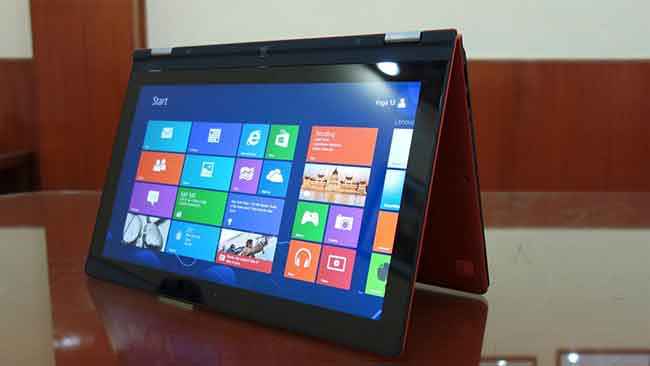 |
 |
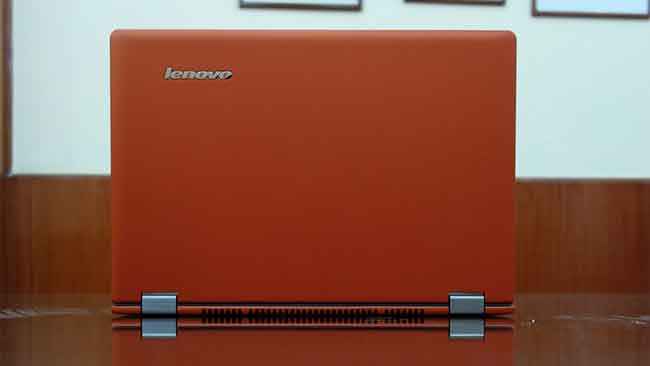 |
Essentially, what you have is a traditional ultrabook as you fish it out of the packaging. The review unit that we received from Lenovo had the orange colour, but there will be multiple colours available. The IdeaPad Yoga 1’s lid has the typical traditional Lenovo clean look, with the branding on one side. The soft feel on the lid is something rarely seen on ultrabooks, because it is considered fashionable (right or wrong, that is open for debate) to have metal shining to show off the quality. The slimness of the Yoga 13 is again something we must appreciate – 16.9mm to be precise. Open the lid, and the keyboard deck catches your attention immediately – with the leather layer on the palm-rest and around the keyboard.
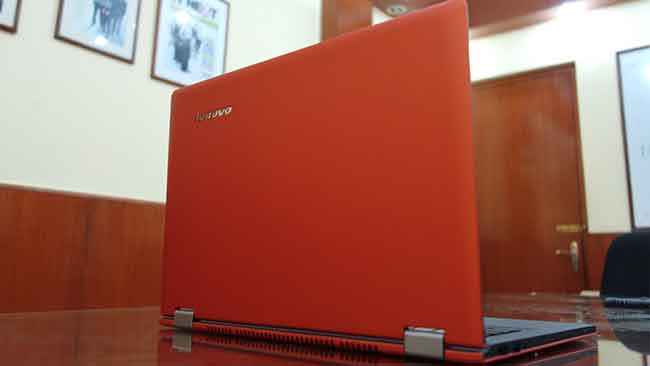 |
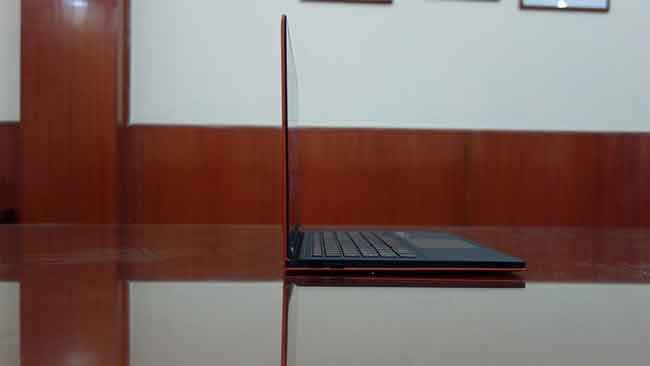 |
 |
The IdeaPad Yoga 13’s keypad’s key size and design is pretty much the same as what we saw on the U-series ultrabooks. The good change, albeit a small one, is that the keys are now closer to the essential square, rather than the profound curve on the base. With this change, typing quickly and correctly, without looking down on the keyboard, is easier. However, the placement of the shift key in relation to the directional keys and the enter key is still not perfect. Most keyboards place the shift key above the arrow keys, and below the enter key, with both having a relatively similar size. In the Yoga 13’s case, the shift key is placed right next to the upward arrow key, and if you are not careful, you can make the wrong key press. Notice it a little too late, and half the document you are typing will be a complete mess.
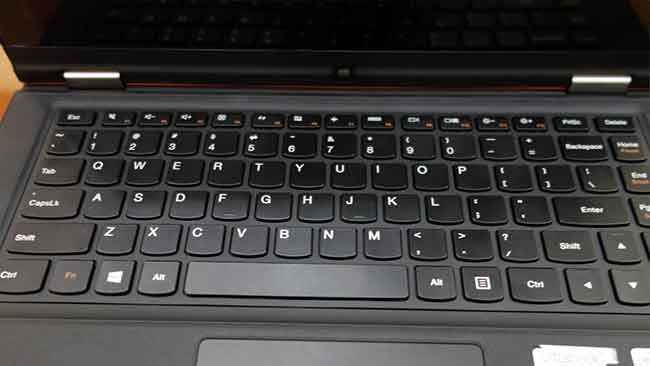 |
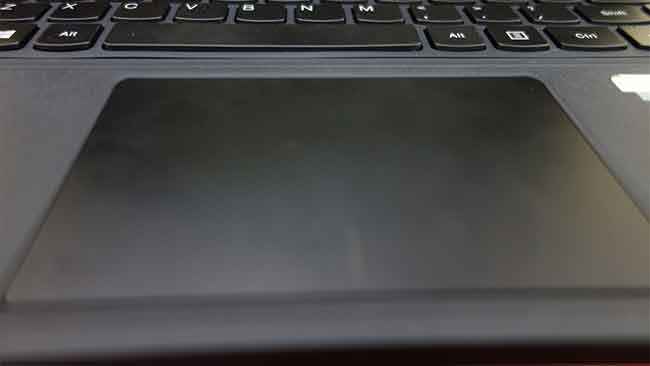 |
 |
Staying with the keyboard, there is a profound dip all across the keyboard when you are typing. Trust me when I say this – my 4.5 year old HP laptop does not have even a fraction of that dip, as I type out this article on that keyboard. The video review will give you a better look at what we are talking about.
Apart from the keyboard build quality niggle, which is something that we can surely get used to after a period of time, the rest of the IdeaPad Yoga 13’s build quality is excellent.
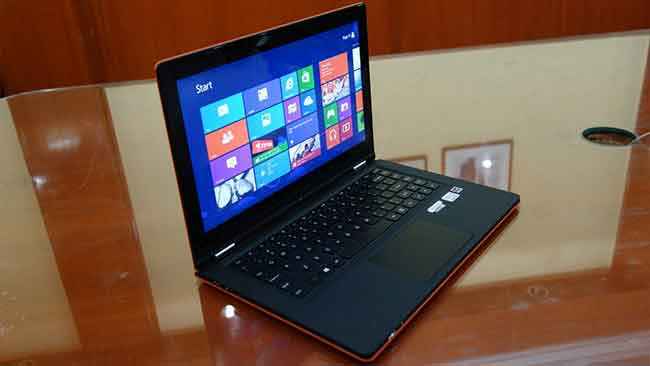 |
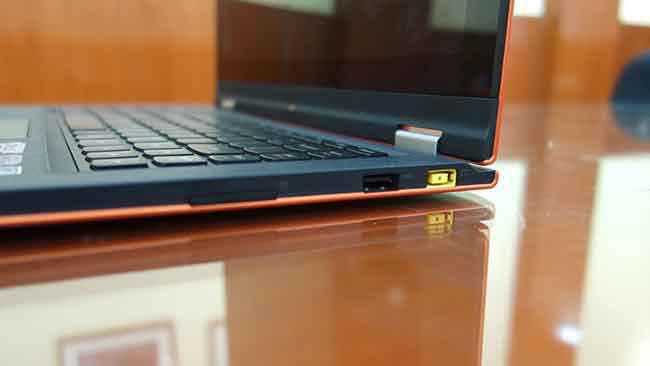 |
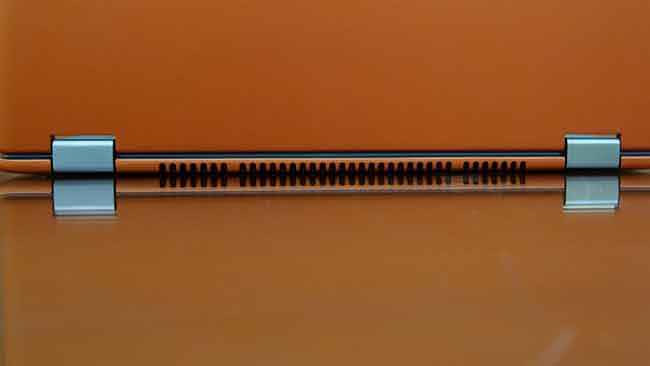 |
The display hinge is fairly solid, and that is critical for a touchscreen. We have faced the issue of display rocking back and forth when using the touchscreen, on certain ultrabook, but this one does not budge on its own. Having said that, it is fairly smooth to move the screen around to switch to the stand, tent and tablet mode. Again, the quality of the display hinge is critical in all these positions.
The flip back screen is a complete opposite of the swivel mechanism we saw on the Dell XPS 12. Unlike the XPS, the entire frame on the Yoga 13 moves along, and not just the screen attached to two hinges within a frame on either side.
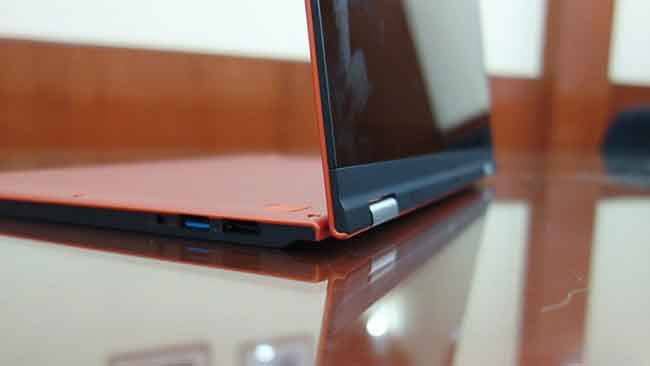 |
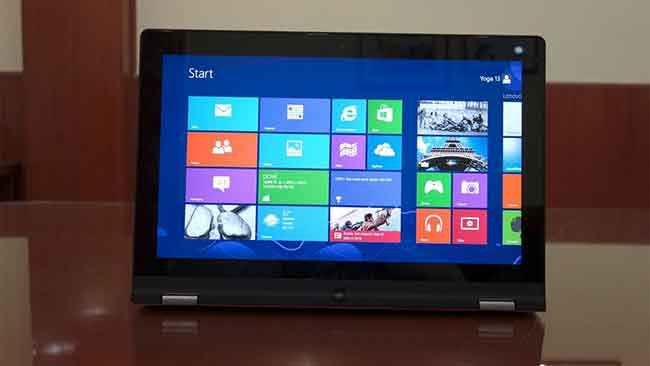 |
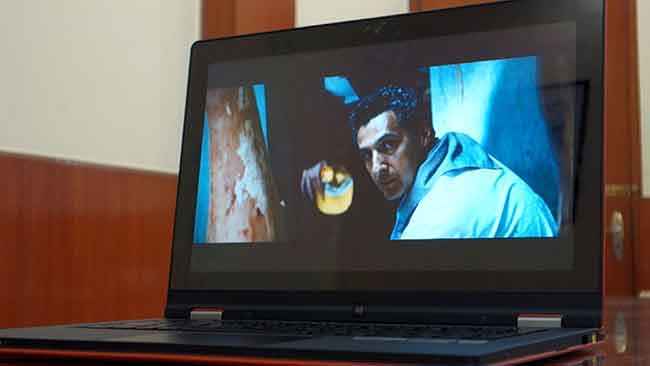 |
Features & Specifications
We usually look at the hardware and the specs of a device first, in this section. For the Yoga 13, we will make a departure from the usual and talk about the Yoga positions first!
First up is the typical ultrabook mode. This is what ultrabooks have always been like, and the Yoga 13 in this mode is no different. The slim profile makes it rather comfortable to carry around. The second is the tent mode, in this case, the screen twists over the keyboard and both prop up the machine. Along the way, you can have the display at 90 degrees to the back of the keyboard deck, and this can be used as a display only. Then, there is the tablet mode. While all these modes are rather interesting and unique, something that we are worried about is the fact that the keyboard remains exposed to the potential of damage. Even in tablet mode, you will essentially be holding it by what is actually the keyboard deck. The individual keys are in for some major damage, if you are not careful.
The IdeaPad Yoga 13’s specifications are fairly standard for ultrabooks, and pretty much in-line with what the closest rival, the Dell XPS 12 offers. There is the Ivy Bridge Intel Core i5-3317U processor, 4GB of RAM and the 128GB SSD.
However, the display on the Yoga 13 is very good, and the stand-out feature. The IPS display has a 1600 x 900 pixel resolution. Yes, it is less than the Full HD display on the XPS 12, but there are two things to consider – 1. the IPS display is better than the one on the XPS in terms of colour reproduction, viewing at angles and text rendering and 2. The Yoga’s 13.3-inch display is more comfortable to be used as an ultrabook than a smaller 12.5-inch display on the XPS. We were very impressed by the overall experience of using this display. It is equally good if you are using this for reading or for watching a movie. Yes, it is slightly reflective, and that is something you will have to live with. Brightness levels are also slightly higher than the XPS 12.
For all its build quality faults, we must say that the keyboard on the Yoga feels fairly consistent when you are typing an article on it. Key travel is adequate, and the sharp response is better than even the best keyboard we had seen till now, in the Samsung Series 5, at least for ultrabooks below the Rs. 80,000 price bracket. Once you get used to the key design and the half size shift key, typing documents on this will be a breeze.
Performance
The Lenovo IdeaPad Yoga 13 and the Dell XPS 12 are neck and neck in terms of performance. Our benchmark scores indicate that the performance of both machines is very much similar. But that is not a surprise, considering the power package is almost the same in both. The PC Mark 07 score of 4862 for the Yoga 13 is slightly higher than the 4734 of the XPS 12. In terms of real world usage, the Yoga 13 feels quicker than the XPS 12, ever so slightly. What is important to mention is that the Lenovo machine comes with a fairly clean Windows 8 installation, while there are a bunch of preloaded apps on the Dell XPS 12. If you aren’t using some of them, we would recommend you uninstall regularly, for a better performing machine at your disposal. This configuration is more than enough to run fairly heavy tasks viewing an HD video playback, and skipping within the timeline of an 8GB HD movie rip did not make the machine stutter.
The IdeaPad Yoga 13’s touchscreen response is fairly consistent throughout, no matter what mode you use this in. When in tablet mode, the touch pressure is pretty much in line with the Apple iPad, for example. Before I get hung, drawn and quartered for saying this ludicrous thing, let me specify that the Acer Aspire M3 ultrabook that we reviewed sometime back was not as good in terms of touchscreen sensitivity.
The IdeaPad Yoga 13 does take the game to a new level in terms of battery life. In high performance mode, our battery life benchmark tests clocked 329 minutes. This beats the previous best of 300 minutes by the Dell XPS 12. Essentially, with controlled brightness levels, this will easily get you around 7 hours of battery backup – enough to get you through almost an entire day at work.
Bottom Line
If you want an ultrabook with the utmost amount of flexibility, then the Lenovo Yoga 13 is worth considering. It can twist and turn into many positions. However, with these devices, build quality needs to be paid proper attention to, and the exposed-to-elements keyboard is something that needs to be improved upon. You will have to be careful while using it, and let no one kid you on that aspect. Very good performance, with the excellent battery life being the best part.
